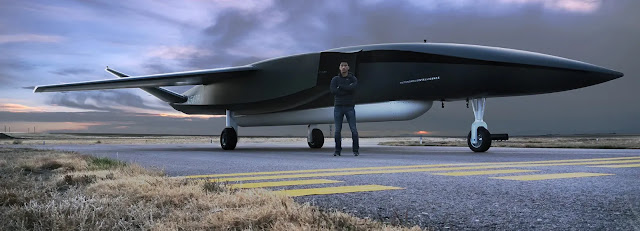Aevum logo.
Dec. 7, 2020
Ravn X
Drones can be extremely useful in many areas. The thing is no longer to demonstrate. However, can they also prove useful for space exploration?
Aevum unveils Ravn X, fully autonomous orbital rocket launching drone
This week, an Alabama-based company by the name of Aevum unveiled the Ravn X, a drone thought and designed to launch satellites into low orbit. The beast weighs around 25 tons when fully loaded, making it one of the heaviest unmanned craft in existence today. The aircraft is also 5.5 meters long, with a wingspan of over 18 meters. It looks like it came straight out of Macross Plus.
Aevum Ravn X, a massive drone for launching satellites into space
The promise of this drone is most interesting: the device should be able to put a satellite into low orbit in about three hours. This, according to Aevum, would allow to significantly shorten the delays in satellite launches, they would then be counted only in months. Apart from its exterior appearance and its impressive measurements, the Ravn X is not that different from any other aircraft. The craft needs about a mile of runway to take off, allowing it to do so from almost any commercial airport. And the drone uses traditional fuel.
Enough to further shorten the launch times
Once the Ravn X is at the correct altitude, the two-stage rocket it carries detaches and ignites its engines in half a second. Ultimately, according to Aevum, 95% of the launch vehicle will be reusable but initially, it will be necessary to be satisfied with 70%. When Ravn X has completed its delivery, it lands, like any airplane, and returns to the hangar to prepare for another launch.
Aevum says the Ravn X represents a new paradigm for rocket launching into space. And while the autonomous aspect of its approach is indeed different, other companies are working to launch rockets into space from aircraft. This is the case with Virgin Orbit, although it has yet to achieve a successful first test launch. The Ravn X's first mission will aim to bring a US Space Force ASLON-45 satellite into orbit somewhere in the course of next year.
Aevum: https://www.aevumspace.com/
Images, Video, Text, Credits: Aevum/Orbiter.ch Aerospace/Roland Berga.
Greetings, Orbiter.ch



